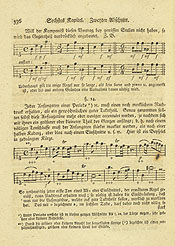
Türk’s Exercises
![]()
The Klavierschule of Daniel Gottlob Türk (1750-1813) was
written at the time when the pianoforte was replacing the clavichord as
the principal domestic keyboard instrument. This book deals with aesthetic
questions and subtleties of touch and expression in more depth than many
of the earlier tutors. The chapter on accentuation demonstrates conventions
of musical grammar and emphasis that depend on context and were often
not written out in the score. Example 14 is particularly interesting in
this regard, as the + signs denote a hierarchy of accentuation derived
from the ordering of strong and weak beats and their place in the musical
phrase. Türk accompanies the upper example with the explanation that
f and p, as a rule, correspond to the strong and weak parts of a measure.
"If a composer wants otherwise, he must indicate it in the score."
![]()
Daniel Gottlob Türk. Klavierschule. Leipzig;
Halle: Auf Kosten des Verfassers, 1789.
![]()

Copyright
© 2002 Division of Rare & Manuscript
Collections
2B Carl A. Kroch Library, Cornell University, Ithaca, NY, 14853
Phone Number: (607) 255-3530. Fax Number: (607) 255-9524
For
reference questions, send mail to:
rareref@cornell.edu
If you have questions or comments about the site, send mail to: webmaster.